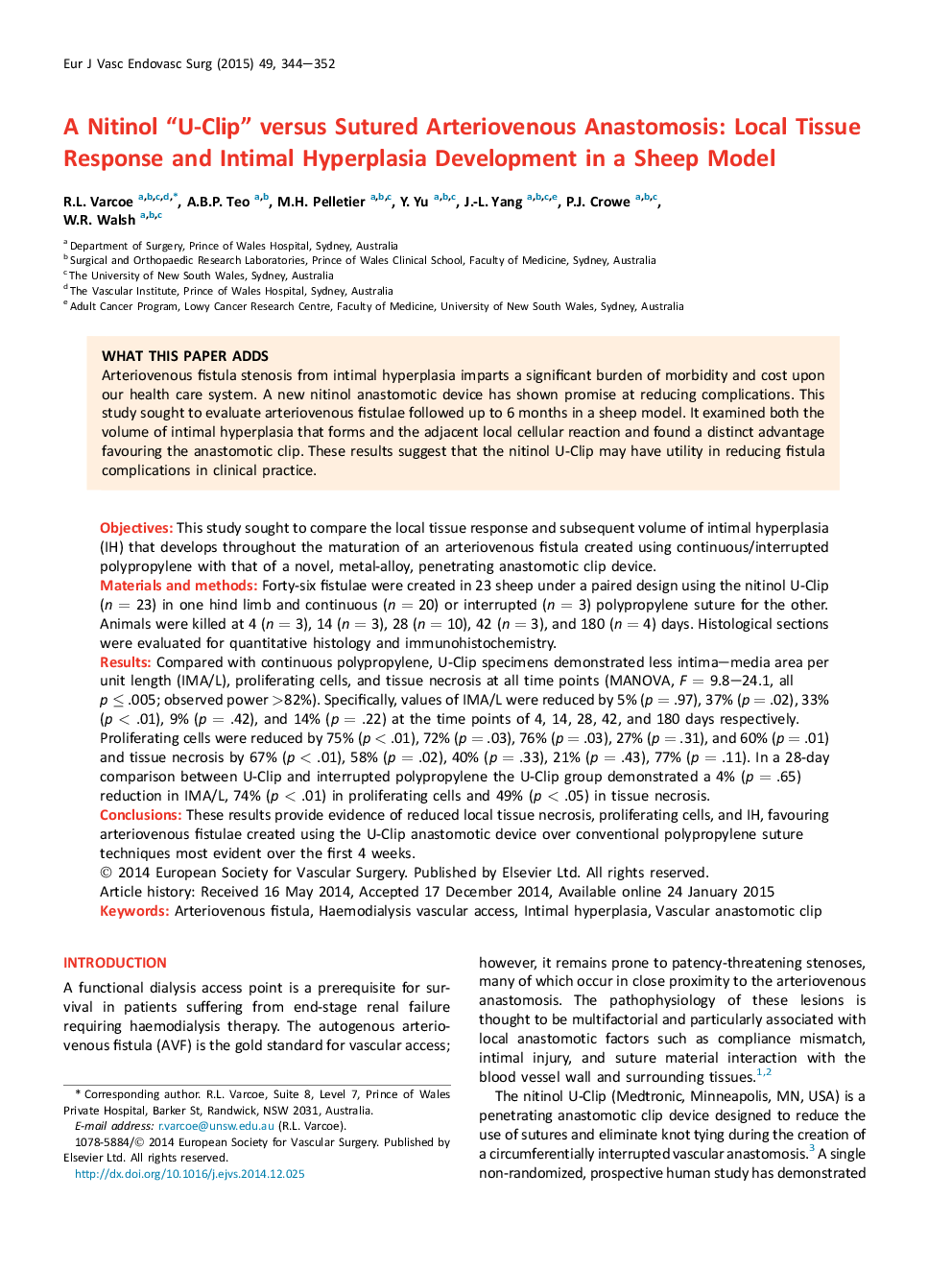| Article ID | Journal | Published Year | Pages | File Type |
|---|---|---|---|---|
| 5958109 | European Journal of Vascular and Endovascular Surgery | 2015 | 9 Pages |
ObjectivesThis study sought to compare the local tissue response and subsequent volume of intimal hyperplasia (IH) that develops throughout the maturation of an arteriovenous fistula created using continuous/interrupted polypropylene with that of a novel, metal-alloy, penetrating anastomotic clip device.Materials and methodsForty-six fistulae were created in 23 sheep under a paired design using the nitinol U-Clip (n = 23) in one hind limb and continuous (n = 20) or interrupted (n = 3) polypropylene suture for the other. Animals were killed at 4 (n = 3), 14 (n = 3), 28 (n = 10), 42 (n = 3), and 180 (n = 4) days. Histological sections were evaluated for quantitative histology and immunohistochemistry.ResultsCompared with continuous polypropylene, U-Clip specimens demonstrated less intima-media area per unit length (IMA/L), proliferating cells, and tissue necrosis at all time points (MANOVA, F = 9.8-24.1, all p â¤Â .005; observed power >82%). Specifically, values of IMA/L were reduced by 5% (p = .97), 37% (p = .02), 33% (p < .01), 9% (p = .42), and 14% (p = .22) at the time points of 4, 14, 28, 42, and 180 days respectively. Proliferating cells were reduced by 75% (p < .01), 72% (p = .03), 76% (p = .03), 27% (p = .31), and 60% (p = .01) and tissue necrosis by 67% (p < .01), 58% (p = .02), 40% (p = .33), 21% (p = .43), 77% (p = .11). In a 28-day comparison between U-Clip and interrupted polypropylene the U-Clip group demonstrated a 4% (p = .65) reduction in IMA/L, 74% (p < .01) in proliferating cells and 49% (p < .05) in tissue necrosis.ConclusionsThese results provide evidence of reduced local tissue necrosis, proliferating cells, and IH, favouring arteriovenous fistulae created using the U-Clip anastomotic device over conventional polypropylene suture techniques most evident over the first 4 weeks.
